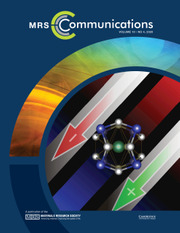Crossref Citations
This article has been cited by the following publications. This list is generated based on data provided by Crossref.
Blanche, Pierre-Alexandre
and
Lynn, Brittany
2016.
Photorefractive Organic Materials and Applications.
Vol. 240,
Issue. ,
p.
1.
Maurer, Michael
Gawron, Evan
and
Middlebrook, Christopher
2021.
Progressive Poling of Large Area, High r33 Electro-Optic Polymer SEO100c.
Applied Sciences,
Vol. 11,
Issue. 17,
p.
8108.
Blanche, Pierre-Alexandre
Ka, Jae-Won
and
Peyghambarian, Nasser
2021.
Review of Organic Photorefractive Materials and Their Use for Updateable 3D Display.
Materials,
Vol. 14,
Issue. 19,
p.
5799.


